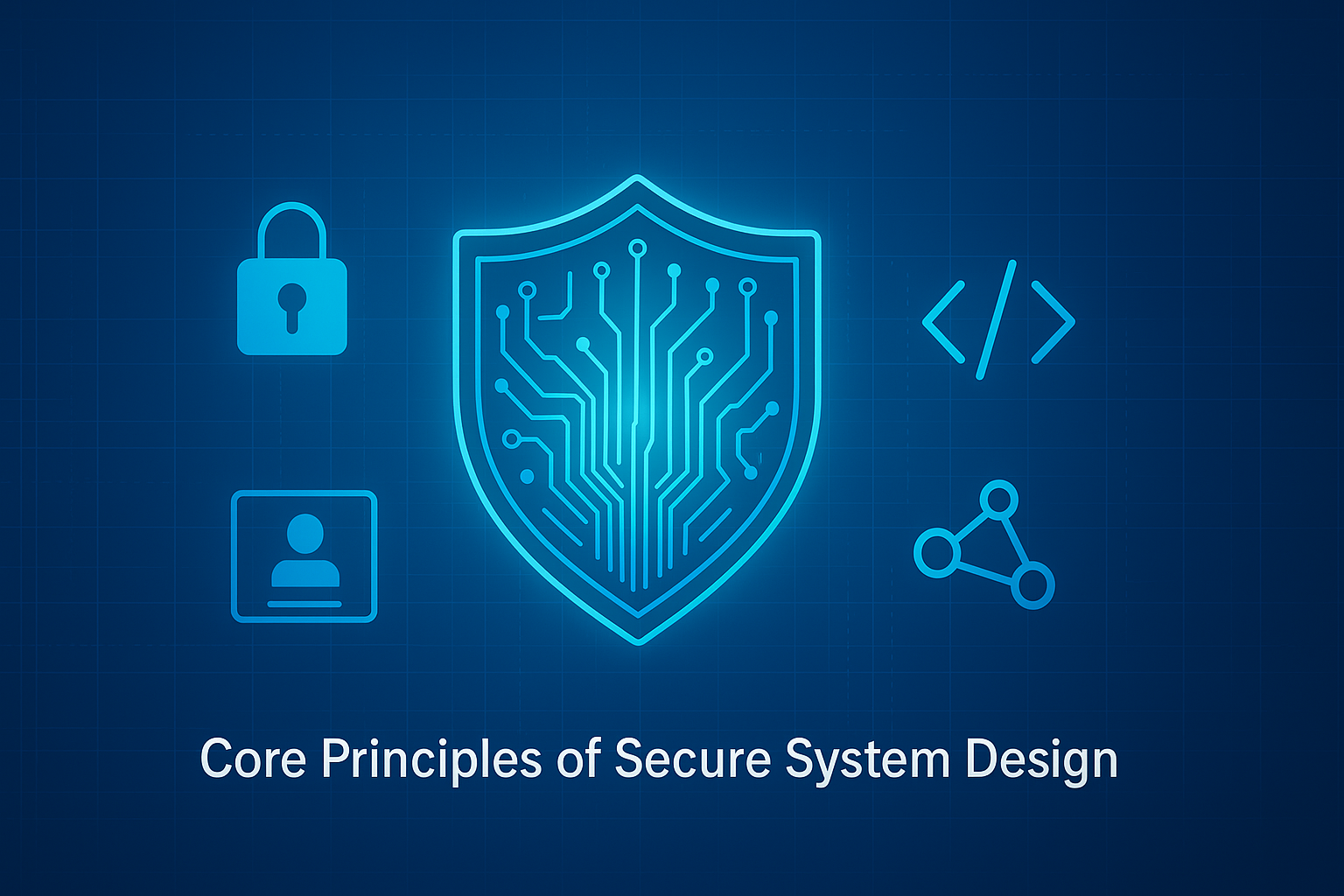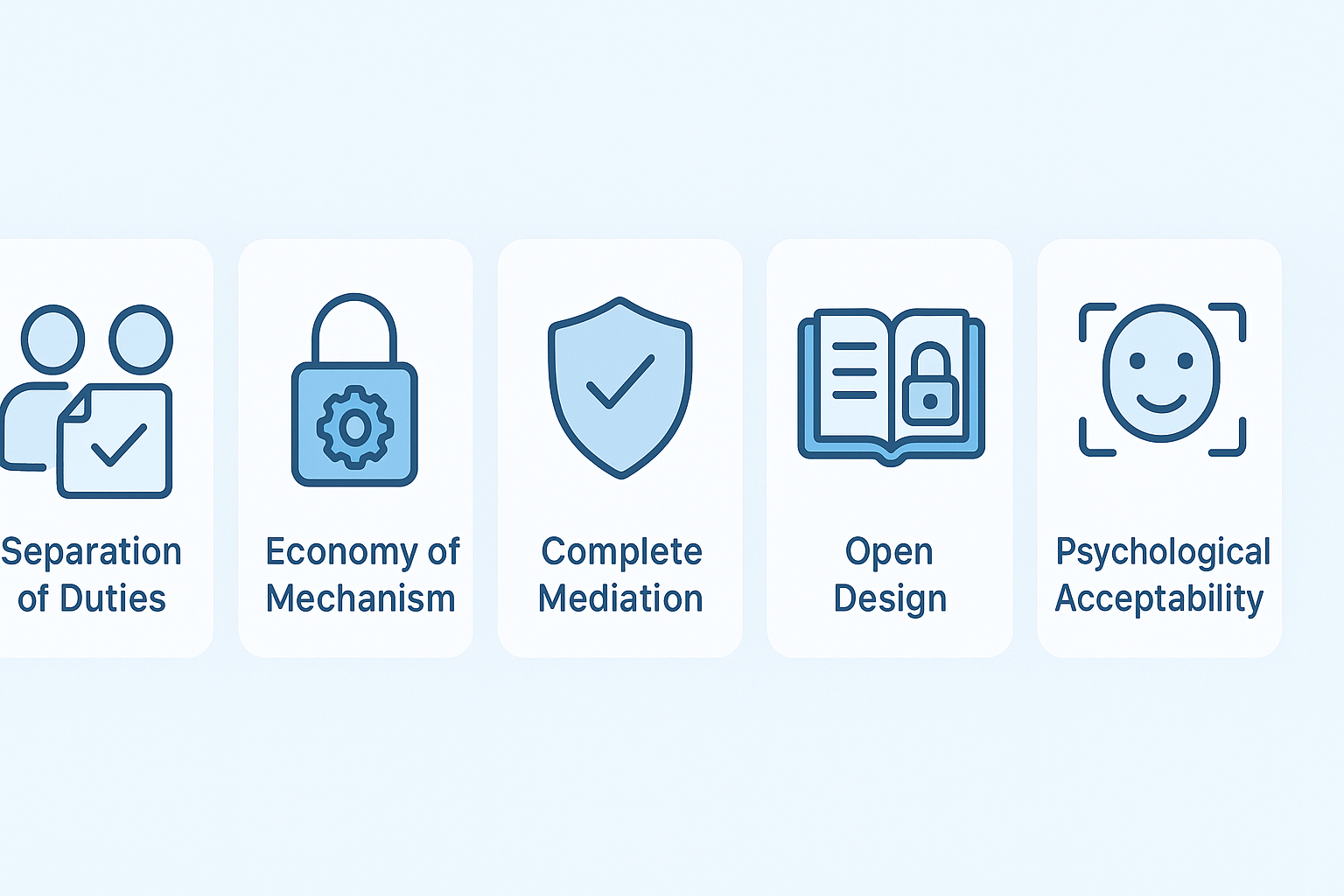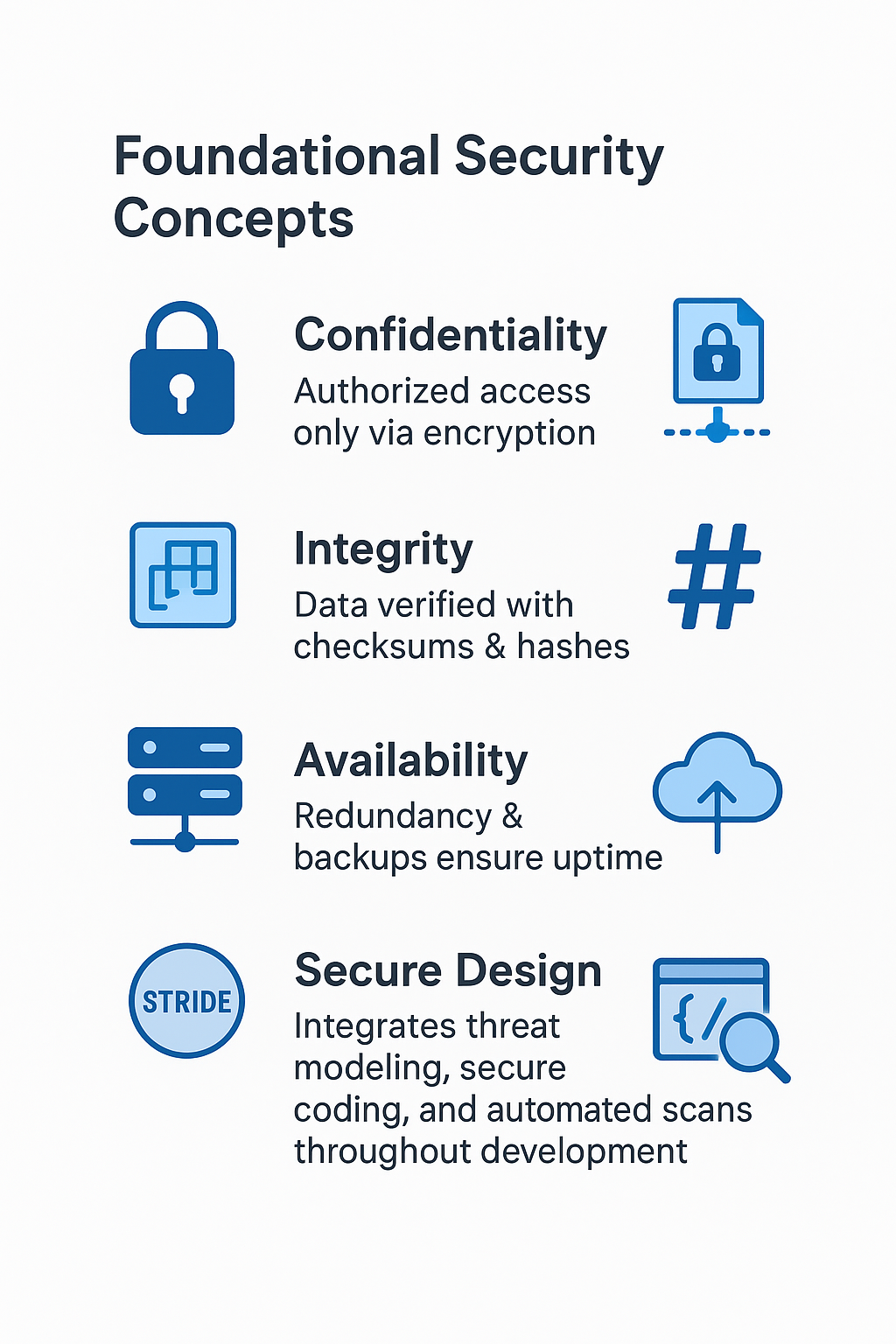
Security isn’t optional anymore, we learned that lesson the hard way. After a decade of building systems, our team knows that secure coding practices catch problems before they become disasters. It’s like building a house, you need a solid foundation before adding walls and windows.
We’ve seen too many projects rush to add security features later, only to find fundamental flaws buried in the code. Whether you’re a seasoned developer or just starting out, these principles will help you build systems that actually withstand attacks. Let’s dig into what works and what doesn’t.
Key Takeaways
- Secure coding practices reduce vulnerabilities early and create a strong security foundation.
- Principles like least privilege, fail-safe defaults, and separation of duties limit damage from breaches.
- Defense in depth and open design provide multiple protective layers and transparent validation.
Core Principles That Actually Work
Least Privilege Principle
This principle means users and processes get only the permissions they absolutely need , no more, no less. Imagine a hotel key card that only opens your room and the lobby, never the manager’s office. We implement role-based access control to enforce this, so if an attacker compromises an account, the damage is limited.
Applying a secure design principles overview helps developers grasp this fundamental approach to minimize risk by enforcing strict access controls early in the architecture.
Defense in Depth
No one builds a fortress with just a single wall. Our approach layers multiple defenses to catch threats at different points:
- Network firewalls that block unwanted traffic
- Intrusion detection systems watching for suspicious activity
- Regular security audits to spot weaknesses early
- Encrypted data transmission preventing eavesdropping
This layered defense means if one control fails, others still protect the system.
Fail-Safe Defaults
Systems should default to the most secure state when things go wrong. For example, if our authentication service encounters an issue, it denies access rather than leaving doors open. This principle prevents accidental exposure due to misconfiguration or failure.
Real-World Implementation Strategies

In one recent audit, more than half of the identified issues were due to basic misconfigurations or unpatched software, our security architecture integrates several practical measures:
- Multi-factor authentication (MFA) for strong identity verification
- Monthly penetration testing to uncover hidden vulnerabilities
- Automated vulnerability scanning for continuous assessment
- 24/7 incident response team for rapid breach mitigation
For example, one healthcare provider that implemented RBAC plus continuous vulnerability assessment reduced internal unauthorized access threats by roughly 30 % within 18 months. (1)
The security landscape never stays still. Just last week we patched three zero-day vulnerabilities discovered in widely used software. Staying vigilant with continuous monitoring and quick response is non-negotiable.
This approach aligns well with applying secure design patterns to reduce risk through layered controls and proactive detection.
Practical Security Measures in Action

Zero trust architecture isn’t just a buzzword , it’s how we verify every request, no matter its origin. This means:
- Authentication required at every access point
- Regular credential rotation to reduce risk
- Encrypted communication channels protecting data in transit
- Detailed audit logging for accountability and forensic analysis
Often, simple hygiene prevents most vulnerabilities. During a recent audit, 60% of issues traced back to basic misconfigurations or outdated patches. This reinforces that security is an ongoing process, not a one-time fix.
Adopting a secure-by-design methodology ensures continuous evaluation and layered defenses that keep systems resilient to evolving threats.
More Core Principles Explained

Separation of Duties
To prevent any one person from having excessive control, critical tasks are divided among multiple roles. For example, financial transactions require one person to initiate and another to approve. This reduces risks from insider threats and mistakes.
Economy of Mechanism
We’ve learned that simpler security designs are better. Complex mechanisms tend to hide bugs and are harder to maintain. We prefer using well-tested encryption algorithms rather than inventing new ones. Keeping it simple helps maintain security over time.
Complete Mediation
Every access request must be verified. This means not trusting cached permissions or previous validations. We check authorization each time to ensure no unauthorized access slips through.
Open Design
Security should not depend on secrecy of implementation. Our cryptographic protocols and security frameworks are designed to be publicly reviewed. This transparency allows independent validation and improves trust.
Psychological Acceptability
Security measures have to be user-friendly. If users find controls annoying, they try to bypass them. Using biometrics or multi-factor authentication balances strong security with ease of use.
Minimize Attack Surface Area
We reduce exposed entry points by disabling unnecessary services and closing unused network ports. The fewer openings, the less chance attackers have to find a way in.
Secure Defaults
Systems ship with secure configurations by default. This stops users from accidentally weakening security. For example, we enforce strong password policies out of the box.
Zero Trust
Adopting a zero-trust architecture means designing systems under the assumption that every request, inside or outside the network, could be hostile. This approach mandates strong identity verification, continuous evaluation of each access request, and strict least privilege at every layer. (2)
Foundational Security Concepts Supporting These Principles

Confidentiality
Data is only accessible to authorized users. Encryption at rest and in transit keeps sensitive information safe from unauthorized eyes.
Integrity
Data must remain accurate and unmodified by unauthorized parties. We use checksums and cryptographic hashes to verify integrity.
Availability
Systems and data must be accessible when needed. Redundancy, backups, and failover configurations ensure business continuity.
Integrating Secure System Design into Development
Credit: Tom Olzak
Security by design means incorporating security considerations at every stage of development rather than as an afterthought. Threat modeling helps us identify vulnerabilities early, using frameworks like STRIDE to categorize threats. Secure coding standards guide developers to avoid common pitfalls and reduce software vulnerabilities.
We also rely on static analysis tools to detect issues before deployment. Automated scans catch problems like cross-site scripting or injection attacks early.
Starting with Secure Coding Practices
We always emphasize secure coding practices first, because they address software vulnerabilities right at their source. In our teams, every piece of code undergoes rigorous review, at least two sets of eyes check for mistakes or security issues. This effort prevents common weaknesses like SQL injection or buffer overflows from slipping into production.
For example, just last month our monitoring systems blocked 47 attempted SQL injection attacks aimed at a client’s database. These attacks would have succeeded if not for our strict input validation and sanitization routines. This hands-on experience shows how securely written code significantly raises the system’s resistance to attack.
FAQ
How does security architecture help protect systems from modern cyber threats?
A solid security architecture builds the foundation for defense in depth. It links access control, secure protocols, and network segmentation into one system. Together, these elements support authentication protocols, encryption standards, and firewall configuration. When done well, this layered setup limits damage from security vulnerabilities and strengthens overall system resilience against breaches.
Why is the least privilege principle important in secure software development?
The least privilege principle means users and apps only get the access they truly need. This rule supports separation of privilege and secure coding. It reduces damage from software vulnerabilities and prevents data leaks. Combined with role-based access control and secure design patterns, it keeps systems safer and easier to manage long-term.
What are fail-safe defaults, and how do they improve system integrity?
Fail-safe defaults ensure that when something fails, the system locks down instead of opening up. It’s part of economy of mechanism, keeping things simple but effective. Alongside secure boot, system hardening, and patch management, fail-safe defaults protect system integrity and data confidentiality by reducing the risk of unauthorized access or hidden weaknesses.
How does threat modeling connect to risk assessment and breach prevention?
Threat modeling helps teams predict and stop attacks before they happen. It works with risk assessment, vulnerability management, and security testing to reveal weak spots early. Using tools like penetration testing, code review, and digital forensics, teams can apply risk mitigation strategies that boost breach prevention and protect critical data and services.
What’s the role of security governance in long-term information protection?
Security governance sets the rules, like a security policy or password policy, to keep organizations accountable. It guides security auditing, compliance standards, and incident response. With strong information security management, cloud security controls, and privacy protection policies, companies can ensure data protection, maintain trust, and handle security incidents quickly and transparently.
Conclusion
What we’ve learned over years of building secure systems is that no single principle is enough. Secure coding lays the groundwork, but layering in least privilege, defense in depth, fail-safe defaults, and user-friendly controls builds real resilience. Keeping mechanisms simple and openly designed encourages continuous improvement and trust.
Security isn’t a finish line, it’s a cycle of awareness and adaptation. Regular testing, patching, and incident response complete that defense. Apply these principles consistently, and your systems will be ready to handle evolving threats with confidence.
If you’re ready to strengthen your foundation in secure coding, join the Secure Coding Practices Bootcamp. The program trains developers through hands-on, real-world coding sessions, covering the OWASP Top 10, input validation, authentication, encryption, and safe dependency management. Designed by experts and built for developers, it’s a practical way to turn these principles into everyday habits.
References
- https://moldstud.com/articles/p-real-life-examples-how-security-architecture-mitigates-cyber-threats
- https://learn.microsoft.com/en-us/security/zero-trust/zero-trust-overview

